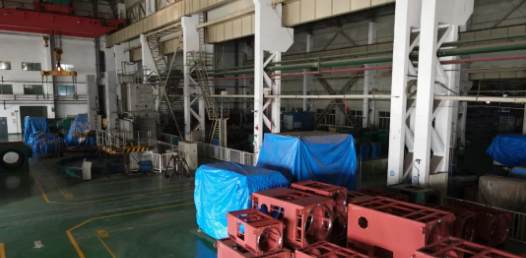0102030405
Enterprise intelligent manufacturing five types of mode element conditions II
2024-06-27 10:43:06
The intelligent manufacturing capability of enterprises can be subdivided according to five types of mode elements: discrete, process-based, network collaborative manufacturing, mass personalized customization, and remote operation and maintenance services.
Third, network collaborative manufacturing
1. The network manufacturing resource collaborative cloud platform has been built, with a perfect system architecture and corresponding operating rules.
2. Through the collaborative cloud platform, the manufacturing resources of society/enterprises/departments are displayed, and the effective docking of manufacturing resources and demands is realized.
3. Through the collaborative cloud platform, the sharing, complementation and docking of demand-oriented innovation resources and design capabilities among enterprises/departments are realized.
4. Through the collaborative cloud platform, the order-oriented inter-enterprise/inter-departmental production resources can be reasonably allocated, as well as the parallel production organization of each link of the manufacturing process and the supply chain.
5. Built around the whole production chain collaborative sharing product traceability system, to achieve inter-enterprise information traceability services covering product manufacturing and operation and maintenance services.
6. It has established industrial information security management system and technical protection system, and has information security guarantee capabilities such as network protection and emergency response.
Through continuous improvement, the networked manufacturing resource collaborative cloud platform is continuously optimized, inter-enterprise and inter-departmental innovation resources, production capacity and service capacity are highly integrated, manufacturing and service operation and maintenance information is highly shared, and the dynamic analysis and flexible configuration of resources and services are significantly enhanced.
Fourth, large-scale personalized customization
1. Products adopt modular design, through differentiated customization parameters, combination to form personalized products.
2. Built an Internet-based personalized customization service platform, through the customization parameter selection, three-dimensional digital modeling, virtual reality or augmented reality, to achieve deep interaction with users, quickly generate product customization solutions.
3. A personalized product database is built, and big data technology is used to mine and analyze the characteristics of users' personalized needs.
4. Personalized customization platform and enterprise R & D design, planning and scheduling, flexible manufacturing, marketing management, supply chain management, logistics distribution and after-sales service and other digital manufacturing systems to achieve collaboration and integration.
Through continuous improvement, the modular design method, personalized customization platform and personalized product database are continuously optimized, and a complete data-driven enterprise R & D, design, production, marketing, supply chain management and service system is formed, which significantly improves the ability to meet the personalized needs of users quickly and at a low cost.
Fifth, Remote operation and maintenance services
1. Intelligent equipment/products using remote operation and maintenance service mode should be configured with open data interface, with data collection, communication and remote control and other functions, using the industrial Internet supporting IPv4, IPv6 and other technologies, collect and upload equipment status, operation, environmental conditions and other data, and flexibly adjust equipment operating parameters according to remote instructions.
2. Establish a remote operation and maintenance service platform for intelligent equipment/products, which can effectively screen, sort out, store and manage the uploaded data of equipment/products, and provide users with daily operation and maintenance, online detection, predictive maintenance, fault warning, diagnosis and repair, operation optimization, remote upgrade and other services through data mining and analysis.
3. The intelligent equipment/product remote operation and maintenance service platform should share information with the equipment manufacturer's product lifecycle management system (PLM), customer relationship management system (CRM), and product development management system.
4. The remote operation and maintenance service platform of intelligent equipment/products shall establish the corresponding expert database and expert consultation system, which can provide intelligent decision support for the remote diagnosis of intelligent equipment/products, and propose operation and maintenance solutions to users.
5. Establish information security management system and have the ability of information security protection. Through continuous improvement, an efficient and secure intelligent service system is established, and the services provided can form real-time and effective interaction with the products, greatly improving the integrated application level of embedded systems, mobile Internet, big data analysis, and intelligent decision support systems.













